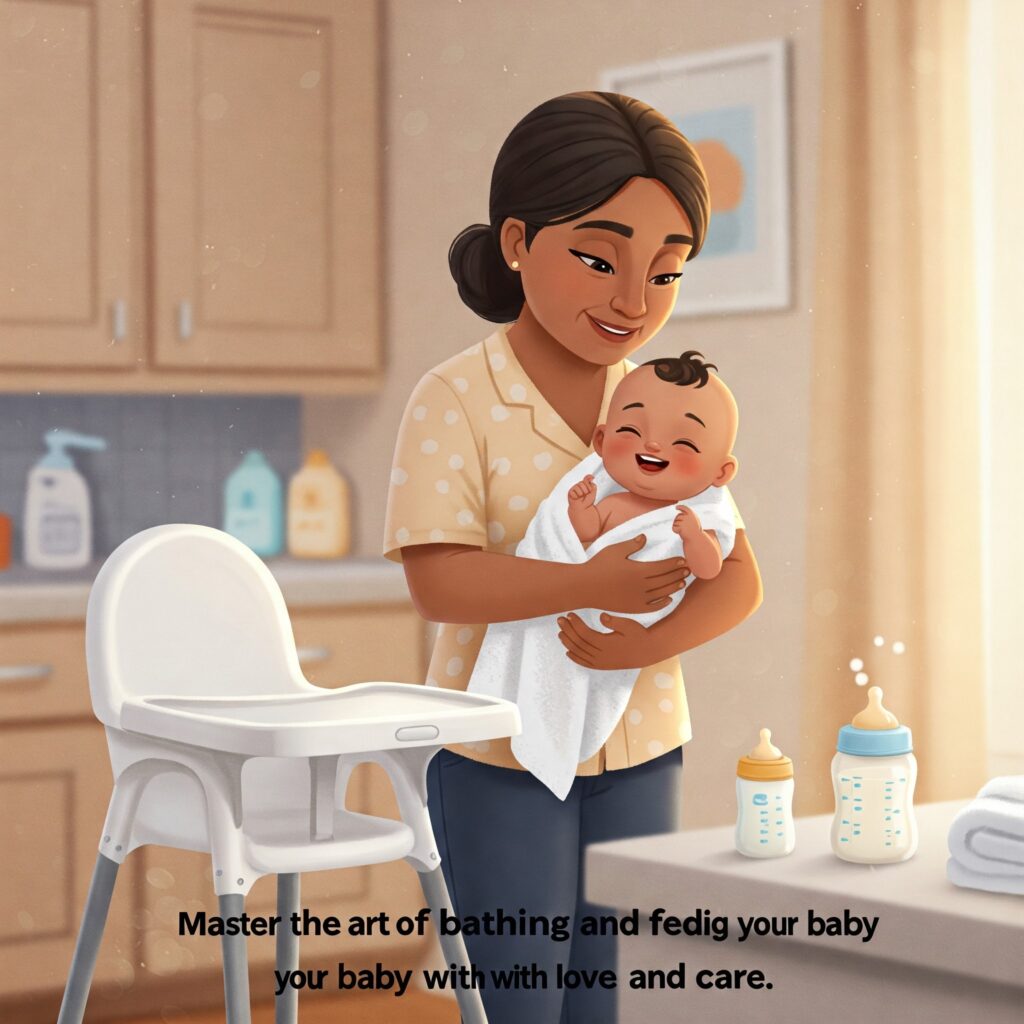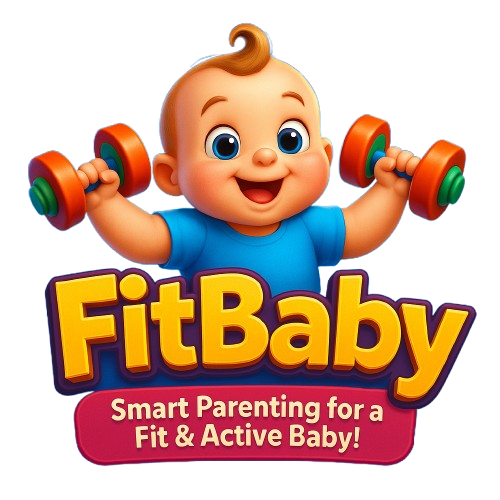Table of Contents
Introduction
Becoming a parent is a joyful yet overwhelming experience, especially when it comes to basic care routines like bathing and feeding your baby. While it’s natural to worry about potential dangers, being informed and prepared can help you navigate these daily tasks with confidence.
This guide covers everything you need to know about:
✅ Safe bathing practices to prevent accidents
✅ Feeding tips to avoid choking hazards
✅ Essential safety measures for water and food
Bathing Your Baby: Safety First

1. Never Leave Your Baby Unattended
When it comes to bathing your baby, the single most important rule is constant, hands-on supervision. It may seem like common sense, but it’s worth emphasizing: babies can drown in as little as one inch of water—and it can happen in just a matter of seconds. Their little bodies are not yet strong enough to lift their heads or regain balance if they slip, even in shallow water.
Whether you’re using a bathtub, bathroom sink, or even a small inflatable kiddie pool, the same rule applies—never take your eyes off your baby, not even for a moment. That means no stepping away to grab a towel, answer the phone, or check the door. If you must leave the bathing area for any reason, always take your baby with you, wrapped safely in a towel.
Keeping your baby within arm’s reach at all times ensures that you can respond immediately if they slip, slide, or show any signs of distress. A few moments of distraction could lead to a preventable tragedy. By staying present and focused, you turn bath time into a safe, nurturing, and joyful experience for your baby.
2. Water Temperature and Depth
- Use warm (not hot) water – Test with your elbow or a thermometer (ideal: 98.6°F/37°C).
- Fill the tub with just 2-3 inches of water – Enough to clean without risk.
3. Baby-Proofing Water Hazards
- Install toilet locks and keep bathroom doors closed.
- Empty buckets, kiddie pools, and bathtubs immediately after use.
- Secure home pools with a 4-foot fence and self-locking gate.
4. Bathing Products for Sensitive Skin
When it comes to caring for your baby’s delicate skin, choosing the right bath products is crucial. Always opt for a fragrance-free, hypoallergenic baby wash that’s specifically formulated for sensitive infant skin. Unlike regular soaps, these gentle cleansers are free from harsh chemicals, artificial fragrances, and dyes that can cause dryness, redness, or allergic reactions. Babies’ skin is thinner and more absorbent than adults’, which makes it more vulnerable to irritation—so going with a mild, dermatologist-recommended product helps keep their skin soft, healthy, and rash-free.
In addition to using the right baby wash, it’s equally important to ensure your baby feels safe and secure during bath time. Always support your baby’s head and neck, especially for newborns and infants under 3 months old. Their neck muscles are still developing, and they lack the strength to hold their heads up on their own. Use one hand to gently cradle the head and neck while using the other hand to wash and rinse. A baby bath seat or sling can also help provide added support, but it should never replace your hands-on attention.

By combining safe, skin-friendly products with proper physical support, you create a calm and nurturing environment that not only keeps your baby clean—but also builds trust and comfort with every bath. Discover the best baby bathing products for your little one – click below to shop our top recommendations!
Feeding Your Baby: Preventing Choking Hazards

1. When to Start Solids (and What to Avoid)
- Around 6 months, babies can begin purees and soft solids.
- Avoid choking hazards like:
- Whole grapes, nuts, popcorn
- Hard cheeses, hot dogs (cut into tiny pieces if needed)
- Sticky foods (peanut butter, gum)
2. Safe Feeding Practices
- Always supervise meals – No walking or playing while eating.
- Encourage sitting upright – Avoid feeding in car seats or bouncers.
- Introduce one food at a time to monitor allergies.
3. Learn Infant CPR & Choking First Aid
- Take a certified infant CPR course.
- Know how to perform back blows and chest thrusts for choking babies.
Common Parental Worries (And How to Stay Calm) When Bathing and Feeding Your Baby

1. “Am I Being Too Paranoid?”
It’s normal to worry, but don’t let fear stop you from enjoying parenthood. Instead:
- Educate yourself on real risks (e.g., drowning, choking).
- Take precautions without avoiding normal activities.
2. Finding a Balance
- Water safety ≠ Avoiding water – Supervised swims are great for development!
- Food caution ≠ Over-pureeing everything – Let your baby explore textures safely.
Final Thoughts

Bathing and feeding your baby should be bonding experiences, not stressful chores. By following these safety guidelines, you can create a calm, enjoyable routine while keeping your little one protected.
Want more parenting tips? Subscribe for weekly baby care guides!
If you’re interested in learning about Baby Massage Oil—its benefits, how to choose the right one, and 4 essential safety tips—click the button below.

